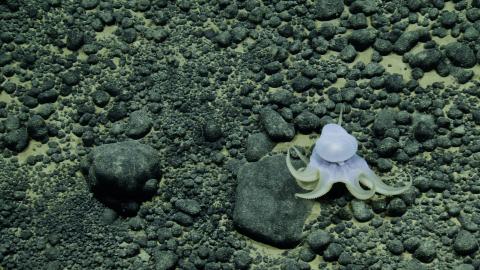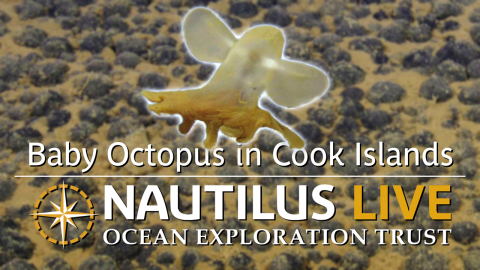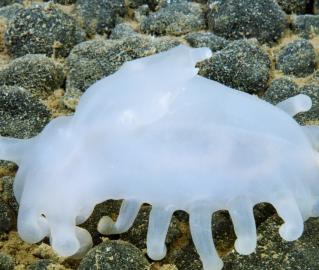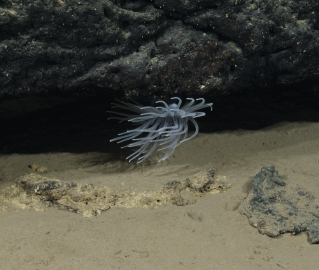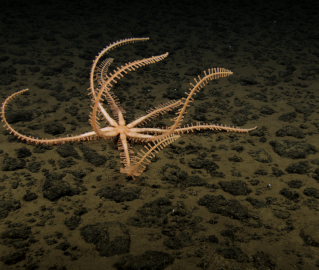Abyssal Sponges in the Cook Islands
During the NA176 expedition, the Nautilus team used ROV Little Hercules and Atalanta to dive over 5,000 meters (16,400 feet) deep and the first views of explored areas of the Cook Islands’ seafloor. Our team encountered a wealth of biodiversity, including many gorgeous glass sponges. In this video, you’ll get up close and personal with some of them, starting with a resilient Euplectellid glass sponge growing in a unique shape from the seafloor. Glass sponge skeletons are made up of tiny sharp silica spicules that form geometric patterns creating sculptural shapes. Further on the seabed, the team spotted (likely) a carnivorous sponge sharing its sturdy seabed boulder in the currents with a filter-feeding friend tunicate. Sponges are habitat engineers on the seafloor, including the rotund white sponge with hollowed caverns- perfect for other deep-sea animals to live in! Join the team looking closely at the semi-translucent sponges on the abyssal plain to spot identifying associates like brittle stars and squat lobsters. This compilation reminds us how diverse and ecologically important these ancient deep-sea sponges are!
Special thanks to DeepSea (https://www.deepsea.com/ ) for partnering with OET to test their MxD SeaCam imaging system, which gave us some incredible zooms of these sponges!
The NA176 Deep Sea Habitats of the Cook Islands expedition is supported by NOAA Ocean Exploration via the Ocean Exploration Cooperative Institute to use the ROV, mapping, and telepresence systems of E/V Nautilus to explore deep-sea areas prioritized by the Cook Islands government and local stakeholders. All collected data will be made publicly available to stimulate further exploration and research, and to support ongoing local management and future decision-making for the Cook Islands by Cook Islanders.
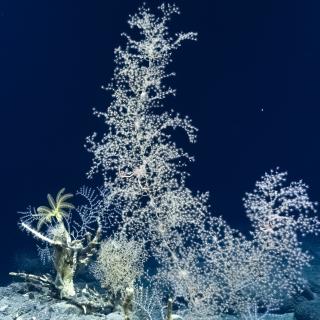
Deep-Sea Habitats of the Cook Islands
This 21-day expedition will utilize the ROV, mapping, and telepresence systems of E/V Nautilus to explore previously unsurveyed deep-sea priority areas identified by the management and science community in the Cook Islands.
